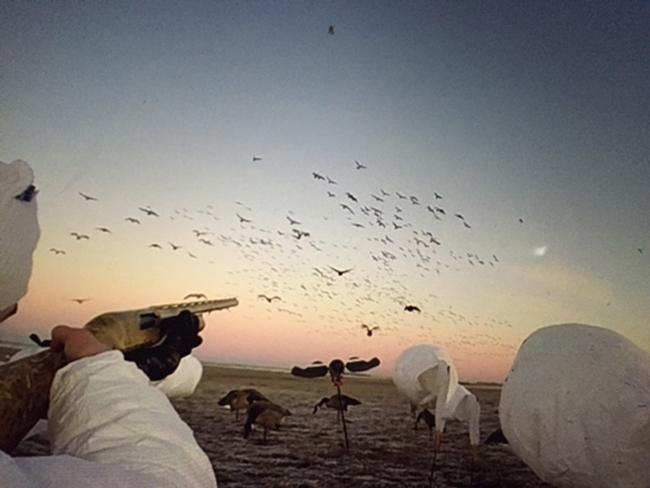Ignorance isn’t bliss when it comes to firearm safety
February 3, 2017
A few years ago in western Minnesota, I was duck hunting in a swamp with a younger cousin of mine who had almost no experience in the field. It had been a fairly slow morning, and it’s times like this that people become bored, tired and dangerous.
We were standing side by side in waist deep water and muck waiting for birds when I looked over to my cousin and saw the barrel of a shotgun pointed squarely at my face.
In the midmorning dullness, he had absentmindedly lowered the firearm from its safe upward position to the crook of his arm, accidentally putting the muzzle on a collision course with my cranium.
After a stern scolding, I had the young man trade spots with me. If his arms grew tired the barrel slipped, it would be safely pointed over the marsh and not at myself.
…upon taking it from him I noticed that the gun had been on fire the entire time. One unintended pull of the trigger would have ended my life that day.
— Brendan McCabe
He was new to hunting, he had not quite gotten the hang of walking through the thick mud of a bog. My cousin handed me his shotgun so he could wade through the swamp more easily. Upon taking it from him, I noticed that the gun had been on fire the entire time. One unintended pull of the trigger would have ended my life that day.
With all of the high profile gun violence that’s been plaguing the United States, tensions between pro-gun and anti-gun parties are at an all-time high. It can be quite difficult to find someone in the middle ground of the gun control debate, as it seems people either place all of their faith in the Second Amendment or believe no one should possess a gun. No matter which side of the scale individuals are on, I believe there is one facet we can all agree on: gun safety is a top priority.
This is not an article that will discuss high capacity magazines or the firearms that utilize them should be allowed in civilian hands. Instead, this article will focus on the aspects of gun safety and responsibility that everyone should see as common ground, though it is rarely flashy enough to be covered in a story on the evening news.
With over 30,000 accidental shootings reported to the CDC every year, I can’t say this bout of absentmindedness is an isolated occurrence. People can bicker back and forth about the pros and cons of banning a gun that holds 30 rounds of ammunition, but I am certain such features play almost no role in that statistic.
The majority of these shootings occur from a single errant shot, typically fired by mistake. Claiming, “I didn’t know the gun was loaded,” is not going to heal the gunshot wound inflicted by carelessness.
While it can be an incredibly exciting and rewarding experience to take someone shooting for the first time, these new shooters are often the most dangerous. People who have never handled a firearm typically have very little respect for them.
I have had new shooters ask me, “Why can’t I point the gun at you? It isn’t even loaded.”
It’s this kind of rationale that gets people killed. The golden rule of gun safety is to treat every firearm as if it were loaded, and to never point a firearm at anything you do not intend to shoot. The remaining, equally important rules of safe firearm handling can be found at www.nssf.org.
Even if the most restricting firearm laws that have been drafted become law, they will not outlaw firearms completely. Many people who approve of these laws are still all right with the possession of hunting guns, which means firearms in some form or another will still be around indefinitely.
Because of this, it is irresponsible for an American to not know how to safely handle a firearm. There are many people who go through life believing guns are evil and that they will never touch one. Some may succeed in never laying a finger on a firearm in their lives, but in a country where there are more guns than people, odds are almost everyone in the U.S. will come into contact with a firearm at some point in their life.
The fact is that in America, it is completely negligent to not know how to safely handle a firearm, even if you never intend to use one. It is much safer to have that knowledge and never use it than display ignorance if the situation arises.
In their day-to-day lives, many people do not use a table saw, a ladder, a drill or even a large kitchen knife, this includes myself, but these are all tools that can be dangerous if used incorrectly. They are common enough that one can argue everyone should know how to properly use them.
At the end of the day, a firearm is a tool. While many people see them only as deadly weapons, when in the right hands, they are no more dangerous than any other tool. If all of the proper protocols for gun safety were followed, 30,000 accidental shootings could be a thing of the past.
No matter if you love guns with all your heart or would prefer to see them all melted down for scrap, it is essential that people know and respect the laws of gun safety.
Brendan McCabe is a copy editor for The Dakota Student. He can be reached at [email protected]









